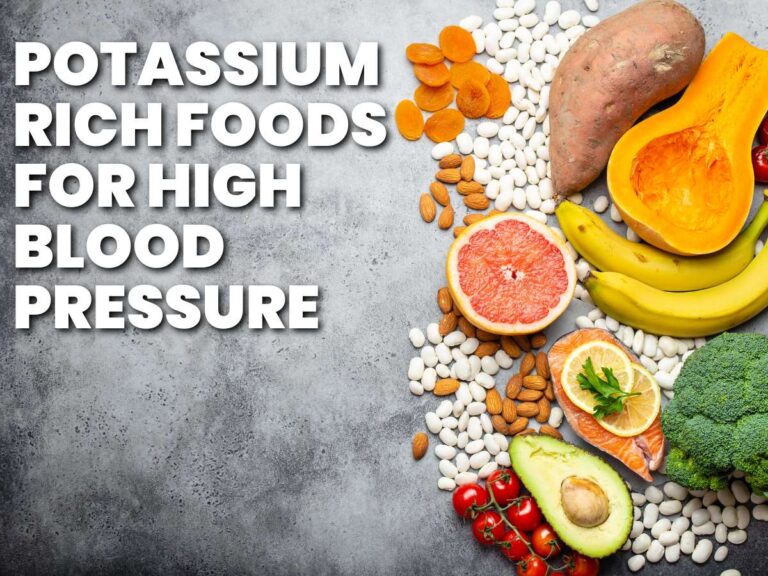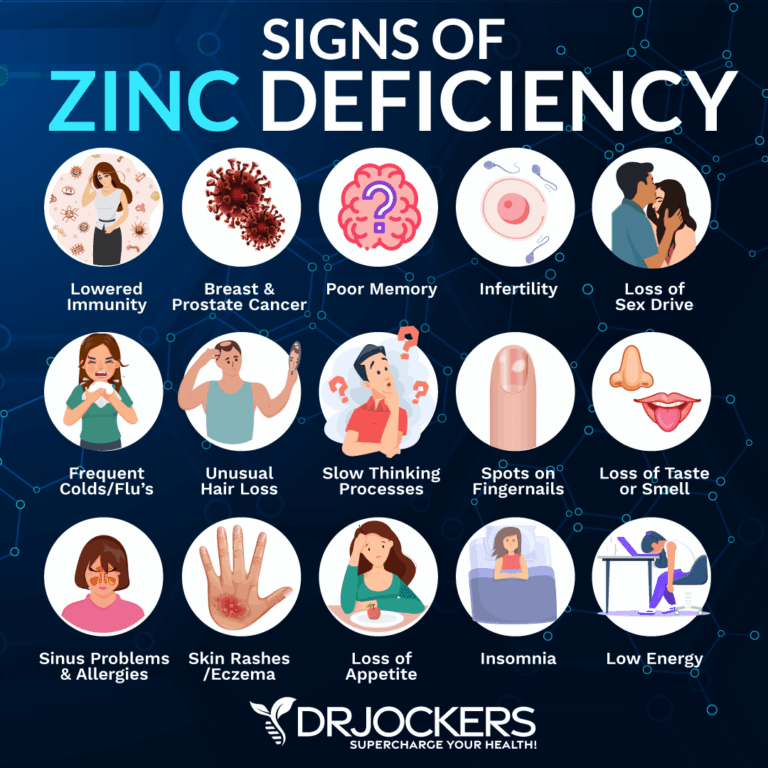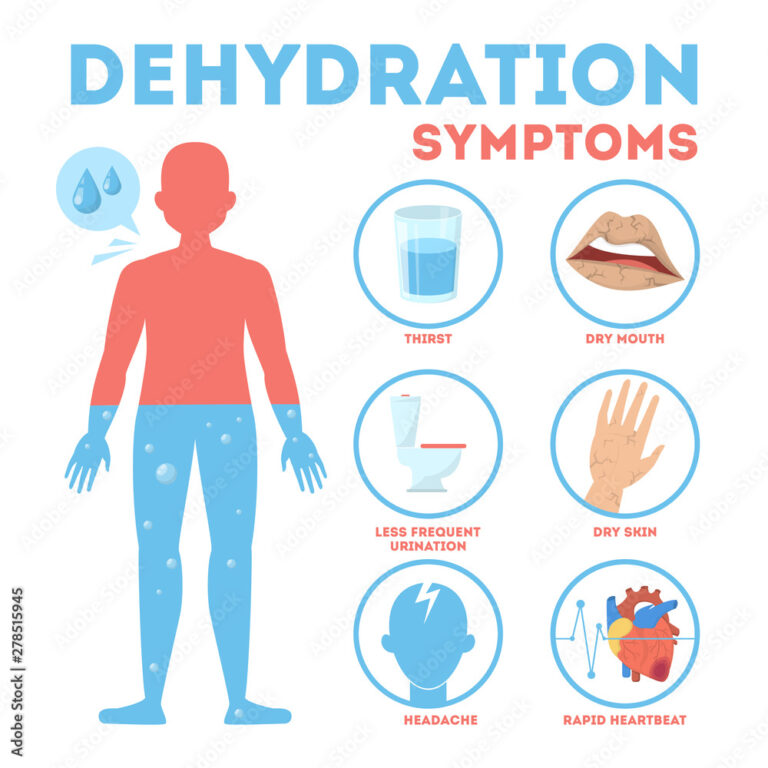Stress Less: Using Magnesium-Loaded Foods to Naturally Calm Your Nervous System
The Unseen Burden: When Modern Life Overwhelms Our Inner Calm
The persistent hum of modern life often resonates with a discordant frequency within us. It’s a tune many of us know all too well: the ceaseless mental chatter, the restless nights spent chasing elusive sleep, the gnawing anxiety that subtly—or not so subtly—colors our days. We live in an era of unprecedented connectivity and technological advancement, yet paradoxically, many feel more disconnected from their own inner peace than ever before. The demands of careers, relationships, financial pressures, and the constant barrage of information from our digital world conspire to keep our nervous systems in a perpetual state of alert, poised for flight or fight, even when no saber-toothed tiger lurks.
For years, I navigated this landscape, convinced that the low-grade hum of anxiety and the intermittent tremors of panic were simply part of my personal operating system. I tried the usual suspects: meditation apps that promised serenity but often just highlighted my inability to quiet my mind, exercise routines that sometimes amped me up more than calmed me down, and even conventional approaches that offered a temporary reprieve but never quite addressed the root cause. My internal landscape felt like a flickering incandescent bulb, struggling to maintain a steady glow. There were moments of clarity and calm, but they were often fleeting, swallowed by the encroaching shadows of stress.
This narrative isn’t unique to me. It’s a pervasive tale among the knowledgeable and health-conscious, those who understand the theories of wellness but still grapple with its practical application. We dissect studies on neuroplasticity and epigenetic factors, we understand the HPA axis and the sympathetic surge, yet we often overlook the foundational, elemental components that underpin our very physiological resilience. We seek complex solutions when sometimes, the answer lies in the elegant simplicity of nature’s design. My own journey, one of frustrated searching and eventual profound discovery, led me to a truth that was both humbling and liberating: the power of magnesium. Not as a magic pill, but as an essential, often-depleted mineral, quietly orchestrating calm from within, especially when delivered through the vibrant synergy of whole foods.
This article is an invitation to explore that journey, to delve into the science of stress and the profound, often-underestimated role of magnesium in mediating it. It’s a narrative not just of what magnesium does, but how its deficiency has become an unwitting accomplice in our collective anxiety, and how, by consciously re-integrating magnesium-rich foods into our diets, we can begin to naturally recalibrate our nervous systems, fostering a deeper, more sustainable sense of tranquility.
The Intricate Dance of Stress: Understanding Our Internal Alarm System
Before we can appreciate magnesium’s role, it’s crucial to understand the sophisticated, yet sometimes overzealous, mechanisms of stress within our bodies. Our nervous system is a master conductor, guiding a symphony of physiological responses designed for survival. It operates primarily through two complementary branches: the sympathetic nervous system (SNS) and the parasympathetic nervous system (PNS).
The sympathetic nervous system is our accelerator, the "fight or flight" response. When perceived threats arise—be they an actual danger or merely a looming deadline—the SNS springs into action. It triggers the release of adrenaline (epinephrine) and noradrenaline (norepinephrine) from the adrenal glands, leading to increased heart rate, elevated blood pressure, sharpened senses, and a diversion of blood flow to muscles. Simultaneously, the hypothalamic-pituitary-adrenal (HPA) axis is activated. The hypothalamus signals the pituitary gland, which in turn signals the adrenal glands to release cortisol, our primary stress hormone. Cortisol provides a sustained energy boost, dampens inflammation (initially), and keeps us alert. This acute stress response is vital for survival; it allowed our ancestors to escape predators and respond to immediate threats.
The parasympathetic nervous system, on the "rest and digest" or "feed and breed" system, is our brake pedal. Its role is to restore equilibrium after the threat has passed, lowering heart rate, promoting digestion, and conserving energy. Neurotransmitters like acetylcholine are key players here, calming the system down and bringing the body back to a state of homeostasis.
The problem in modern society isn’t the existence of this system, but its chronic activation. Our bodies often perceive financial worries, social media pressures, traffic jams, and demanding work environments as equivalent to existential threats. This leads to chronic stress, where the HPA axis remains perpetually engaged, and cortisol and adrenaline levels stay elevated for extended periods.
The physiological consequences of chronic stress are far-reaching and detrimental:
- Neurotransmitter Imbalance: Prolonged cortisol exposure can disrupt the delicate balance of neurotransmitters in the brain, depleting serotonin (mood regulation) and GABA (calming), while potentially increasing excitatory neurotransmitters like glutamate.
- Inflammation: While acute cortisol dampens inflammation, chronic cortisol can paradoxically lead to systemic inflammation, contributing to a host of chronic diseases.
- Allostatic Load: This term describes the "wear and tear" on the body that results from chronic exposure to stress hormones. It manifests as high blood pressure, insulin resistance, weakened immune function, and neurodegenerative changes.
- Mitochondrial Dysfunction: Chronic stress places a heavy burden on our cells’ energy factories, leading to fatigue and reduced resilience.
- Nutrient Depletion: The heightened metabolic activity and hormonal cascade associated with stress rapidly deplete vital nutrients, creating a vicious cycle. Among the most vulnerable is magnesium.
My understanding of this intricate dance deepened as I sought answers for my own struggles. I recognized the patterns in my own life: the racing thoughts, the physical tension, the digestive upsets, the inability to truly unwind. I was caught in a feedback loop, where stress depleted my resources, and depleted resources made me more susceptible to stress. It was a revelation to realize that while the psychological aspects of stress were undeniable, there was a profound physiological underpinning that was being overlooked. And at the heart of that physiological vulnerability, for many, lay magnesium.
Magnesium: The Unsung Hero of Tranquility
Imagine an essential mineral involved in over 300 enzymatic reactions in the human body. One that plays a critical role in energy production, muscle and nerve function, blood glucose control, and blood pressure regulation. This isn’t just a supporting actor; it’s a lead, a silent orchestrator of health and, crucially, tranquility. That mineral is magnesium.
For too long, magnesium has been overshadowed by more popular nutrients like calcium or vitamin D. Yet, its influence on our nervous system is nothing short of profound. It’s the ultimate natural relaxant, a calming force that acts at multiple levels to soothe an overactive mind and body.
Why is Magnesium Critical for the Nervous System?
-
Neurotransmitter Regulation: Magnesium is a key player in the synthesis and function of several neurotransmitters.
- GABA (Gamma-aminobutyric acid): This is the primary inhibitory neurotransmitter in the brain, responsible for calming nervous activity. Magnesium binds to and activates GABA receptors, enhancing its soothing effects. Think of it as turning down the volume on brain chatter. A deficiency means less effective GABA signaling, leading to increased excitability and anxiety.
- Glutamate: Conversely, glutamate is the primary excitatory neurotransmitter. While essential for learning and memory, excessive glutamate can lead to neurotoxicity and overstimulation, contributing to anxiety, restlessness, and even migraines. Magnesium acts as a natural antagonist to NMDA (N-methyl-D-aspartate) receptors, which are activated by glutamate. By blocking these receptors, magnesium prevents overstimulation, essentially applying a brake to excessive neural firing.
- Serotonin: Magnesium is also involved in the metabolic pathways that produce serotonin, a neurotransmitter vital for mood regulation, sleep, and feelings of well-being.
-
HPA Axis Modulation: Remember the HPA axis and cortisol? Magnesium helps regulate this stress response system. It can reduce the release of cortisol and act as a kind of buffer, preventing the nervous system from spiraling into an overactive state. When magnesium levels are adequate, the body is better equipped to adapt to stress, rather than being overwhelmed by it.
-
Muscle Relaxation: Beyond the brain, magnesium is essential for muscle function. It competes with calcium for binding sites in muscle cells. While calcium causes muscle contraction, magnesium promotes relaxation. This is why magnesium deficiency can manifest as muscle cramps, spasms, restless legs, and general physical tension—all common symptoms of chronic stress.
-
Energy Production (ATP): Magnesium is integral to the production of adenosine triphosphate (ATP), the body’s primary energy currency. Many enzymatic reactions involving ATP require magnesium as a cofactor. Adequate energy levels are crucial for the brain and nervous system to function optimally and maintain resilience against stress.
-
Sleep Regulation: Through its influence on GABA, serotonin, and melatonin (the sleep hormone), magnesium contributes significantly to healthy sleep patterns. It helps relax the body and mind, making it easier to fall asleep and achieve deeper, more restorative sleep. For many, like myself, sleep disruption is one of the most debilitating aspects of chronic stress.
The Magnesium Deficiency Epidemic: A Silent Crisis
Given its vast importance, it’s alarming that magnesium deficiency is incredibly widespread. Estimates suggest that a significant portion of the global population, perhaps as high as 50-80% in Western countries, doesn’t consume enough magnesium. This isn’t just about minor discomfort; it’s a silent crisis contributing to our collective vulnerability to stress and chronic disease.
Several factors contribute to this pervasive deficiency:
- Soil Depletion: Modern agricultural practices have severely depleted the magnesium content in our soils. Crops grown in these soils naturally contain less of the mineral, meaning even a "healthy" diet might not provide sufficient amounts.
- Processed Foods: The standard Western diet is rich in processed foods, which are notoriously poor in magnesium. Refining grains (e.g., white flour from whole wheat) strips away much of the magnesium content.
- Lifestyle Factors:
- Stress Itself: As mentioned, chronic stress depletes magnesium. It’s a cruel irony: the very thing we need to cope with stress is used up by stress.
- Caffeine and Alcohol: Both act as diuretics, increasing magnesium excretion through urine.
- Certain Medications: Proton pump inhibitors (PPIs), diuretics, and some antibiotics can interfere with magnesium absorption or increase its excretion.
- Excessive Calcium Intake: While calcium is important, a disproportionately high intake relative to magnesium can exacerbate deficiency, as these minerals compete for absorption.
- Gut Health Issues: Conditions that impair nutrient absorption, such as Crohn’s disease, celiac disease, or chronic diarrhea, can lead to magnesium deficiency.
- Sugar Intake: High sugar consumption increases magnesium excretion.
The symptoms of magnesium deficiency often mirror those of anxiety and stress: muscle cramps, twitching, restless legs, fatigue, irritability, difficulty sleeping, headaches, and a general sense of unease or panic. It was during my deep dive into this research that I experienced my own "aha!" moment. I checked off nearly every box on the symptom list. It suddenly became clear that my struggle wasn’t just a psychological battle; it was profoundly rooted in a physiological imbalance, a fundamental nutrient gap that was leaving my nervous system exposed and vulnerable. The path forward, I realized, wasn’t just about managing stress; it was about nourishing my body to build resilience from the ground up.
From Deficiency to Sufficiency: The Food-First Philosophy
The realization that my anxiety could be deeply connected to a simple mineral deficiency was both daunting and incredibly empowering. Daunting because it meant acknowledging years of unwitting self-neglect, but empowering because it offered a tangible, natural pathway to healing. My immediate instinct was to reach for a supplement, but a knowledgeable audience, and my own evolving philosophy, understands the profound wisdom of a food-first approach.
Why prioritize food over isolated supplements?
- Synergy: Whole foods offer a complex matrix of nutrients—vitamins, minerals, fiber, antioxidants, phytochemicals—that work synergistically. Magnesium in a spinach leaf comes packaged with vitamin K, iron, and fiber, all of which contribute to its bioavailability and overall health benefits in ways a pill cannot replicate.
- Bioavailability: Nutrients from food are often more readily recognized and absorbed by the body. The body is designed to extract what it needs from the intricate composition of whole foods.
- Fiber and Gut Health: Magnesium-rich foods are often excellent sources of fiber, which is crucial for a healthy gut microbiome. A thriving gut environment is itself linked to improved mood and reduced anxiety through the gut-brain axis.
- Sustainable Habit: Integrating nutrient-dense foods into your diet fosters a holistic, sustainable approach to wellness, rather than relying on a transient supplement regimen.
My journey began not with a dramatic overhaul, but with a conscious commitment to gradually shifting my dietary habits. It was a process of experimentation, learning to love new flavors, and rediscovering the joy of cooking. There were moments of skepticism, particularly when I didn’t feel an immediate shift. But the gradual, subtle improvements – a slightly deeper sleep, a few less instances of that familiar nervous flutter, a newfound calm in situations that once triggered anxiety – solidified my conviction. Food became not just fuel, but medicine, a source of comfort, and a tangible act of self-care.
A Culinary Journey: Embracing Magnesium-Rich Foods
Embarking on a food-first magnesium journey transforms the kitchen into a sanctuary of healing. It’s about consciously selecting ingredients that are nutritional powerhouses, turning everyday meals into opportunities to nourish your nervous system. Here’s a guided tour through some of the stars of the magnesium-rich pantry:
-
Dark Leafy Greens: The Chlorophyll Connection
- Examples: Spinach, kale, Swiss chard, collard greens.
- Why they’re great: These emerald jewels are perhaps the most potent source of dietary magnesium. Magnesium is at the very center of the chlorophyll molecule, the pigment that gives plants their green color and enables photosynthesis. The greener the leaf, the more magnesium it likely contains.
- How to incorporate: Blend spinach or kale into smoothies (the taste is often masked by fruit), sauté chard with garlic, add kale to soups and stews, or make a vibrant salad with a mix of greens. A simple trick: wilt a generous handful of spinach into almost any savory dish at the end of cooking.
-
Nuts and Seeds: Tiny Treasures of Tranquility
- Examples: Almonds, cashews, pumpkin seeds, chia seeds, flax seeds, sesame seeds.
- Why they’re great: These little powerhouses are not only rich in magnesium but also provide healthy fats (omega-3s, monounsaturated fats), protein, and fiber. The combination supports satiety, stable blood sugar, and overall brain health. Pumpkin seeds, in particular, are exceptionally high in magnesium.
- How to incorporate: Sprinkle seeds over salads, yogurts, and oatmeal. Snack on a handful of almonds or cashews. Make homemade trail mix. Add chia or flax seeds to smoothies for an extra boost. Tahini (sesame seed paste) is a delicious way to enjoy sesame.
-
Legumes: Earth’s Hearty Healers
- Examples: Black beans, lentils, chickpeas, edamame.
- Why they’re great: Legumes are an excellent source of plant-based protein, complex carbohydrates, fiber, and, of course, magnesium. Their high fiber content also supports a healthy gut microbiome, which, as we know, has a direct line to brain health and mood regulation.
- How to incorporate: Make hearty lentil soups, chickpea curries, black bean burgers, or add edamame to stir-fries. Hummus, made from chickpeas, is a versatile snack.
-
Whole Grains: The Foundation of Sustained Energy
- Examples: Brown rice, quinoa, oats, whole wheat, buckwheat.
- Why they’re great: Unlike refined grains, whole grains retain their bran and germ, where most of the magnesium and other nutrients reside. They provide sustained energy, preventing blood sugar spikes and crashes that can exacerbate anxiety.
- How to incorporate: Start your day with oatmeal. Substitute white rice with brown rice or quinoa. Choose whole-grain breads and pastas.
- A Note on Phytates: Whole grains and legumes contain phytic acid (phytates), which can bind to minerals like magnesium, reducing their absorption. Soaking, sprouting, or fermenting grains and legumes can significantly reduce phytate content and enhance nutrient bioavailability. This is where traditional food preparation methods prove their wisdom.
-
Avocado: The Creamy Calmer
- Why it’s great: Avocados are not only a fantastic source of healthy monounsaturated fats, which are crucial for brain health, but also provide a good amount of magnesium, potassium, and various B vitamins, all of which support nervous system function.
- How to incorporate: Mash it into guacamole, slice it onto salads or sandwiches, or blend it into creamy smoothies.
-
Dark Chocolate: The Indulgent Antidote
- Why it’s great: This is the permission slip we all need! High-quality dark chocolate (70% cacao or higher) is surprisingly rich in magnesium, as well as antioxidants (flavonoids) and compounds that can stimulate the production of endorphins and serotonin, contributing to a sense of well-being.
- How to incorporate: Enjoy a small square as a mindful treat. Look for brands with minimal sugar and high cacao content.
-
Bananas: More Than Just Potassium
- Why they’re great: While renowned for potassium, bananas also offer a decent dose of magnesium, along with vitamin B6, which is necessary for the production of serotonin.
- How to incorporate: A quick, convenient snack, or added to smoothies.
-
Fatty Fish: Omega-3s and More
- Examples: Salmon, mackerel, halibut.
- Why they’re great: These fish are celebrated for their omega-3 fatty acids, which are powerful anti-inflammatory agents and crucial for brain health. They also contain respectable amounts of magnesium and vitamin D, both of which work synergistically to support overall well-being.
- How to incorporate: Grill, bake, or pan-sear fish a few times a week.
Tips for Maximizing Your Magnesium Intake:
- Diversify Your Plate: Aim for a wide variety of these foods daily to ensure a broad spectrum of nutrients.
- Mindful Snacking: Replace processed snacks with nuts, seeds, or an avocado.
- Smoothie Power: Blend leafy greens, seeds, and bananas into your morning smoothie.
- Meal Prep: Plan your meals to include magnesium-rich options, making it easier to stick to your goals.
- Hydration with a Twist: Some mineral waters are naturally rich in magnesium. Check the label.
My own kitchen became a laboratory of delicious experiments. I discovered the earthy sweetness of sautéed Swiss chard, the satisfying crunch of pumpkin seeds sprinkled over my morning oats, and the comforting warmth of a black bean chili. Each meal became an act of intentional nourishment, a conscious choice to feed my nervous system the building blocks it needed to find its equilibrium. It wasn’t an overnight transformation, but a gradual unfolding. The subtle shifts in my energy, my mood, and my ability to handle daily stressors became undeniable proof that this food-first approach was not just theory, but lived, tangible reality.
Beyond the Plate: Optimizing Magnesium Absorption and Retention
Simply consuming magnesium-rich foods is a powerful first step, but a knowledgeable audience understands that nutrient absorption is a complex interplay. Several factors can either enhance or hinder our ability to utilize this vital mineral. To truly "stress less" through magnesium, we must consider the broader ecosystem of our bodies.
-
The Gut-Brain Axis: A Two-Way Street:
- The Role of the Microbiome: Our gut microbiome plays a pivotal role in nutrient absorption, including magnesium. A diverse and healthy gut flora can enhance the bioavailability of minerals by aiding in their breakdown and absorption. Conversely, an imbalanced microbiome (dysbiosis) can impair absorption.
- Prebiotics and Probiotics: Consuming prebiotic-rich foods (fiber from fruits, vegetables, whole grains, legumes) feeds beneficial gut bacteria. Probiotic-rich foods (fermented foods like kimchi, sauerkraut, kefir, yogurt) introduce beneficial bacteria directly. Nurturing a healthy gut directly supports optimal magnesium uptake. My own improvements in digestion and a reduction in anxiety seemed to track perfectly with the intentional inclusion of fermented foods and plenty of fiber.
-
The Vitamin D and K2 Connection:
- While primarily known for bone health, these fat-soluble vitamins influence mineral metabolism. Vitamin D is crucial for calcium absorption, and in turn, magnesium plays a role in activating vitamin D. Vitamin K2 helps direct calcium to the bones and teeth, preventing its deposition in soft tissues, which can be problematic when magnesium levels are low. Ensuring adequate levels of D and K2 (from sunlight exposure, fatty fish, grass-fed dairy, natto) creates a more harmonious mineral environment.
-
Calcium Balance: The Delicate Dance:
- Magnesium and calcium are often described as "yin and yang" minerals. They work in tandem but also compete for absorption and cellular binding sites. While calcium is vital, excessive intake (especially from supplements without adequate magnesium) can actually exacerbate magnesium deficiency. The ideal ratio is often debated, but a balanced dietary intake, where magnesium isn’t overlooked in favor of calcium, is key. Think of it as ensuring both the "contractor" (calcium) and the "relaxer" (magnesium) are present in appropriate proportions for muscle and nerve function.
-
Minimizing Magnesium Depleters:
- Chronic Stress: As discussed, stress itself depletes magnesium. This creates a vicious cycle where anxiety leads to depletion, which in turn fuels more anxiety. Actively engaging in stress-reduction techniques (mindfulness, yoga, deep breathing, time in nature) not only reduces the immediate impact of stress but also helps conserve your precious magnesium reserves.
- Caffeine and Alcohol: Both are diuretics that increase magnesium excretion. Moderating intake can make a significant difference.
- Sugar and Processed Foods: High sugar consumption and a diet rich in processed foods lead to increased inflammation and nutrient depletion, including magnesium. Reducing these not only frees up magnesium but also improves overall health.
- Certain Medications: If you are on medications that affect magnesium levels (e.g., PPIs, diuretics), discuss this with your healthcare provider to understand potential impacts and strategies for mitigation.
-
Cooking Methods and Water Quality:
- Gentle Cooking: Overcooking vegetables, especially boiling, can leach water-soluble minerals like magnesium. Opt for steaming, stir-frying, or roasting to retain more nutrients.
- Filtered Water: While some mineral waters are magnesium-rich, tap water quality varies widely. Consider a water filter to remove potential contaminants, and if your tap water is very soft, you might want to consider supplementing with magnesium-rich mineral water.
My journey taught me that it wasn’t enough to just eat more spinach; I needed to create an internal environment where that spinach could do its best work. This meant nurturing my gut, being mindful of my overall nutrient balance, and actively managing my stress load. It was a holistic recalibration, where magnesium-rich foods became the cornerstone of a much larger wellness tapestry.
The Holistic Perspective: Magnesium as Part of a Larger Wellness Tapestry
It would be reductionist to present magnesium as a solitary magic bullet. While its impact on the nervous system is profound, true and lasting tranquility arises from a symphony of interconnected practices. Magnesium is a crucial instrument in this orchestra, but it needs the harmony of other elements to truly shine.
My personal transformation wasn’t solely attributable to increasing my magnesium intake, though it was undeniably the catalyst. Rather, the conscious decision to nourish my body with magnesium-rich foods created a virtuous cycle that amplified the efficacy of other stress-reduction techniques I had been exploring, often with limited success.
- Mindfulness and Meditation: With my nervous system less on edge due to adequate magnesium, the practice of mindfulness became genuinely accessible. My mind, no longer constantly agitated, found moments of stillness more readily. Meditation transformed from a frustrating battle against incessant thoughts into a gentle homecoming to the present moment.
- Movement and Exercise: Regular physical activity is a potent stress reliever, but for an exhausted, anxious system, it can sometimes feel like another burden. As my magnesium levels rose, so did my energy and my ability to recover from exercise. Movement became a joyful release, rather than a forced chore, further enhancing the production of feel-good neurotransmitters and reducing cortisol.
- Sleep Hygiene: Magnesium’s direct role in promoting relaxation and GABA function significantly improved my sleep architecture. This, combined with consistent bedtimes, a cool, dark room, and winding down routines, finally allowed me to experience truly restorative sleep, which in turn bolstered my resilience to daily stressors.
- Social Connection and Nature: When the nervous system is chronically stressed, withdrawal and isolation can become tempting. As my internal calm grew, so did my capacity for meaningful social connection. Time spent in nature, a known balm for the soul, felt more deeply grounding and restorative, as my senses were no longer overwhelmed.
- Purpose and Meaning: Ultimately, living a life aligned with one’s values and purpose is a powerful antidote to existential stress. A calm, well-nourished nervous system provides the clarity and energy to engage with these deeper aspects of well-being, fostering a sense of fulfillment that transcends the fleeting anxieties of daily life.
The magnesium-first approach provided the physiological scaffolding upon which these other wellness practices could build. It was as if my internal flickering bulb had finally been replaced with a steady, warm glow, allowing me to see clearly and engage more fully with the world around me. The feeling of regaining control, not over external circumstances, but over my internal response to them, was nothing short of revolutionary.
Navigating the Nuances: When to Consider Supplements
While the food-first philosophy remains paramount, it’s important for a knowledgeable audience to understand that there are contexts where magnesium supplementation might be considered. However, this decision should always be made in consultation with a qualified healthcare professional, as self-prescribing can lead to unintended consequences.
Situations where supplementation might be explored:
- Diagnosed Severe Deficiency: In cases of medically confirmed, significant magnesium deficiency, especially if accompanied by severe symptoms or related health conditions, supplements can rapidly replenish stores.
- Specific Medical Conditions: Certain medical conditions (e.g., Crohn’s disease, celiac disease, chronic kidney disease, type 2 diabetes) or medications can significantly impair magnesium absorption or increase its excretion, making dietary intake alone insufficient.
- High Athletic Demand: Athletes, especially those engaging in intense training, may have higher magnesium requirements due to increased sweating and metabolic demands.
- Acute Stress or Trauma: In periods of intense, acute stress or trauma, the body’s magnesium reserves can be rapidly depleted, and temporary supplementation might be considered to support the nervous system.
- Difficulty Meeting Dietary Needs: For individuals with very restricted diets or severe dietary intolerances, achieving adequate magnesium through food alone might be challenging.
Types of Magnesium Supplements (for the discerning):
Not all magnesium supplements are created equal. Different forms have varying bioavailability and specific applications:
- Magnesium Glycinate: Often recommended for its high bioavailability and calming properties, as glycine itself is an inhibitory neurotransmitter. It’s well-tolerated and less likely to cause digestive upset. Excellent for anxiety and sleep.
- Magnesium L-Threonate: Uniquely shown to cross the blood-brain barrier effectively, making it a focus of research for cognitive function, memory, and potentially reducing anxiety directly within the brain.
- Magnesium Citrate: A popular and generally well-absorbed form, often used for its mild laxative effect, making it helpful for occasional constipation. Less ideal if the primary goal is solely calming the nervous system without bowel stimulation.
- Magnesium Malate: Often favored for muscle pain and fatigue, as malic acid is involved in energy production.
- Magnesium Taurate: Contains taurine, an amino acid that also has calming effects on the nervous system, making it a good choice for cardiovascular health and relaxation.
- Magnesium Oxide: Commonly found in cheaper supplements, but has poor bioavailability and is primarily used for its laxative effect due to its osmotic properties. Not recommended for addressing deficiency.
Potential Side Effects:
The most common side effect of excessive oral magnesium intake is diarrhea, due to its osmotic effect in the gut. Other rare side effects can include nausea, abdominal cramping, and, in very high doses, magnesium toxicity (hypermagnesemia), particularly in individuals with impaired kidney function. This underscores the importance of professional guidance.
My own journey did not require supplementation, but understanding these nuances provided a sense of informed control. It reinforced the idea that our bodies are intricate systems







